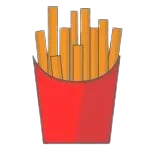Casino Dice Manufacturing: The Science of Ensuring a Perfect Roll
The casino floor is where the unbridled excitement unfolds—a cacophony of cheers and moans, punctuated by the constant chattering of slot machines. In the middle of the struggle, two portions of what look like cubes carry a gambler’s dreams in their possession. Yet the fact is that such dice are more than just tiny pieces of plastic, which many people might not even consider. They are unique creations of fine art and technology to provide justice to each spin as is in tossing an ideal unbiased coin.
Manufacturing of casino dice involves raw materials, such as high-quality cellulose acetate or other polymer. This is not just any plastic; it has been selected to be strong and prove to be uniform. Think of it like baking a gourmet cake: it is with the best quality raw materials that the best products are made. The acetate is also formed into large sheet stock which is cut into cubes. These cubes are far from the perfectly cut geometric shapes that you associate with dice. There is something funny about them at this stage, they are raw but then they are like damp diamonds to be polished at the right time.
22Bet Germany is well-known for its commitment to fair gaming policies, guaranteeing that all elements of chance, including the dice, adhere to the highest standards. This commitment aligns perfectly with the precision and fairness demanded in casino dice manufacturing.
Each cube is measured comprehensively with the use of a micrometer so that all sides of the cube are equal in measurement. One sixteenth of a millimeter either way could make a difference and where there are millions of dollars at stake, fairness cannot be a factor.
Precision Beyond the Surface
After cutting, the cubes undergo sanding and polishing. This step isn’t just about aesthetics—it’s about ensuring balance. Uneven surfaces or hidden air pockets could skew the roll. To avoid such imperfections, manufacturers use lasers to detect any internal inconsistencies. It’s akin to scanning for flaws in a diamond; every detail matters.
The pips (the dots on each side) are then drilled into the dice. Here’s where science meets artistry: the depth of each pip is calculated so that the weight removed by the drilling is replaced with an exact amount of paint. The goal is to keep each side of the die perfectly balanced, avoiding any chance of bias.
Testing the Fairness
Once the dice are crafted, they don’t head straight to the casino floor. They undergo rigorous testing in what can only be described as a dice boot camp. Using machines designed to simulate thousands of rolls, manufacturers analyze the results for any patterns or biases. Think of it as putting a new car through its paces on a test track—every potential issue is identified and resolved before the product hits the road.
Many online casinos enjoy testing the luck of different players. So do the betting platforms. If you are willing to bet or test your luck you can always try out 22Bet NL. Additionally, such platforms ensure the fairness of their games by adhering to stringent standards, fostering player trust. This level of dedication exemplifies integrity in the casino industry.
Any dice that fail these tests are discarded. There’s no room for second chances in the world of casino dice. The stakes are simply too high.
Safeguarding Integrity
Casino dice aren’t just tools of the game; they’re symbols of trust. To maintain this trust, casinos frequently swap out their dice. Most dice are retired after just a few hours of play to ensure wear and tear don’t compromise fairness. Imagine a marathon runner swapping shoes mid-race—it’s a small inconvenience for the sake of peak performance.
Even after retirement, dice are carefully destroyed or sold as souvenirs. This ensures that unscrupulous players can’t smuggle in altered dice to cheat the system.
Why It All Matters
The science behind casino dice isn’t just about physics and precision; it’s about psychology. Players need to trust that the roll is genuinely random and that their odds are exactly what the rules state. This is a trust on which the whole casino industry is built.
The crooked die is not simply an example of bad workmanship – it is a violation of the implicit agreement when a man agrees to bet at a casino. Due to the efforts taken by the casinos to have a proper manufacturing process, they keep the integrity of the games they offer intact.
The Perfect Roll
The next time you listen to that sharp sound of dice on the craps table, read this article to get a glimpse of the science and engineering that goes into those tiny cubes. They are not merely cubes, they represent works of engineering, equity, and protectors of risk. Just like the conductor of a good orchestra, making sure that all is in concert at every note Oklahoma’s these dice keep the casino floor alive with the energy of unpredictability that is the game.



